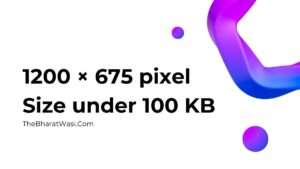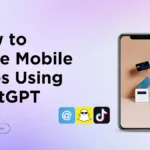Feature image size play a big role in your website speed and SEO. In today’s digital age, where mobile devices have become an integral part of our lives, optimizing your blog for mobile users is no longer an option but a necessity. One crucial aspect of a mobile-friendly blog is the feature image. This image not only enhances the visual appeal of your content but also plays a significant role in how quickly your blog loads on mobile devices. In this comprehensive guide, we will explore the importance of feature images, recommended pixel sizes, image optimization techniques, and much more to help you create a mobile-friendly and fast-loading blog.
Why Are Feature Images Important?
Before we delve into the technical aspects of optimizing feature images, let’s understand why they are crucial for your blog:
1. Visual Appeal
Feature images are the first visual element readers encounter when they visit your blog. They set the tone for your content and can significantly impact a reader’s initial impression. An eye-catching feature image can draw users in, making them more likely to engage with your blog.
2. Content Preview
Feature image size provide a glimpse of what your blog post is about. They serve as a visual preview, giving readers a quick idea of the topic, mood, or subject matter of your article. This can help in attracting the right audience to your content.
3. Social Media Shares
When readers share your blog on social media platforms like Facebook, Twitter, or Pinterest, the feature image often accompanies the link. An appealing image can increase click-through rates and improve the visibility of your blog across social networks.
4. Branding
Consistent use of feature images in a particular style or format can contribute to your blog’s branding. Readers may come to associate a specific image style with your content, which can help with brand recognition and loyalty.
5. Reader Engagement
Feature images can make your content more engaging and reader-friendly. They break up text, making it easier to digest, and can convey information or emotions that words alone might struggle to express.
Now that we understand why feature images are essential let’s explore how to optimize them for mobile-friendliness and fast loading.
Optimizing Feature Image Size for Mobile Devices

1. Choose the Right Dimensions
The first step in optimizing your feature image for mobile devices is to choose the right dimensions. Mobile screens vary in size, so it’s crucial to strike a balance between an image that looks good on larger screens and doesn’t overwhelm smaller ones.
For feature images, consider using dimensions of around 1200 pixels by 675 pixels, which corresponds to a 16:9 aspect ratio. This size works well for most mobile devices without sacrificing image quality.
2. Select the Correct File Format Feature image size
Choosing the correct file format is essential for mobile optimization. For feature images, the JPEG format is generally the best choice. JPEG offers a good balance between image quality and file size compression, making it suitable for fast loading on mobile devices.
3. Compress Your Feature Image Size
Image file size directly impacts loading times, especially on mobile networks. To ensure fast loading, aim to keep your feature image’s file size under 100 KB. You can achieve this by using image compression tools or saving the image at a slightly lower quality setting when exporting. Several online tools and software applications are available for this purpose.

4. Feature Image Size Optimization
Beyond compression, consider optimizing your images further. This includes removing unnecessary metadata and using image optimization plugins or software. Optimization ensures your images load as quickly as possible without compromising quality.
5. Mobile-Responsive Design : feature image size
Your blog should use a mobile-responsive design, which means that the layout and images adapt to different screen sizes and orientations. Mobile responsiveness is critical for providing a seamless user experience on all devices, including smartphones and tablets.
6. Alt Text Matters
Don’t forget to add descriptive alt text to your feature image. Alt text serves two essential purposes: accessibility and SEO. It ensures that users with disabilities can understand the image’s content, and it provides search engines with valuable information, improving your blog’s SEO.
7. Lazy Loading in WordPress website
Implement lazy loading for images on your website. This technique loads images as users scroll down the page, reducing the initial load time. Lazy loading is especially useful for blogs with numerous images, as it prevents all images from loading simultaneously, which can slow down the page.
8. Content Delivery Network (CDN) : What is CDN ?
Consider using a Content Delivery Network (CDN) to serve images from servers located closer to the user’s location. CDNs improve image loading speed, especially for mobile users. Popular CDN services include Cloudflare, Amazon CloudFront, and Akamai.
FAQs Related Feature Image Size
Q1: Can I use PNG images for feature images on my blog?
Yes, you can use PNG images for feature images, but keep in mind that they generally have larger file sizes compared to JPEGs. If you choose PNG, make sure to optimize and compress the image for faster loading.
Q2: Are there any WordPress plugins for image optimization?
Yes, several WordPress plugins, such as WP Smush, ShortPixel, and Imagify, can help optimize your blog’s images automatically.
Q3: How can I check if my blog is mobile-responsive?
You can check the mobile responsiveness of your blog by resizing your browser window or by using online tools like Google’s Mobile-Friendly Test.
Q4: What is the ideal alt text length for images?
The ideal alt text length is concise and descriptive, typically under 125 characters. Focus on conveying the image’s content or purpose effectively.
Q5: Should I use a CDN for my blog’s images?
Using a CDN for images can significantly improve loading times, especially for mobile users. Consider using a CDN if your blog has a global audience or experiences high traffic.
Conclusion
Optimizing feature images for mobile devices is a crucial aspect of creating a mobile-friendly and fast-loading blog. By choosing the right dimensions, file format, and compression techniques, you can enhance the user experience for your mobile audience. Implementing mobile-responsive design, lazy loading, and utilizing a Content Delivery Network can further boost your blog’s performance on mobile devices. Remember that a well-optimized feature image not only improves loading times but also contributes to the overall appeal and effectiveness of your blog.
Read More : ARTIFICIAL INTELLIGENCE AUTOMATION






